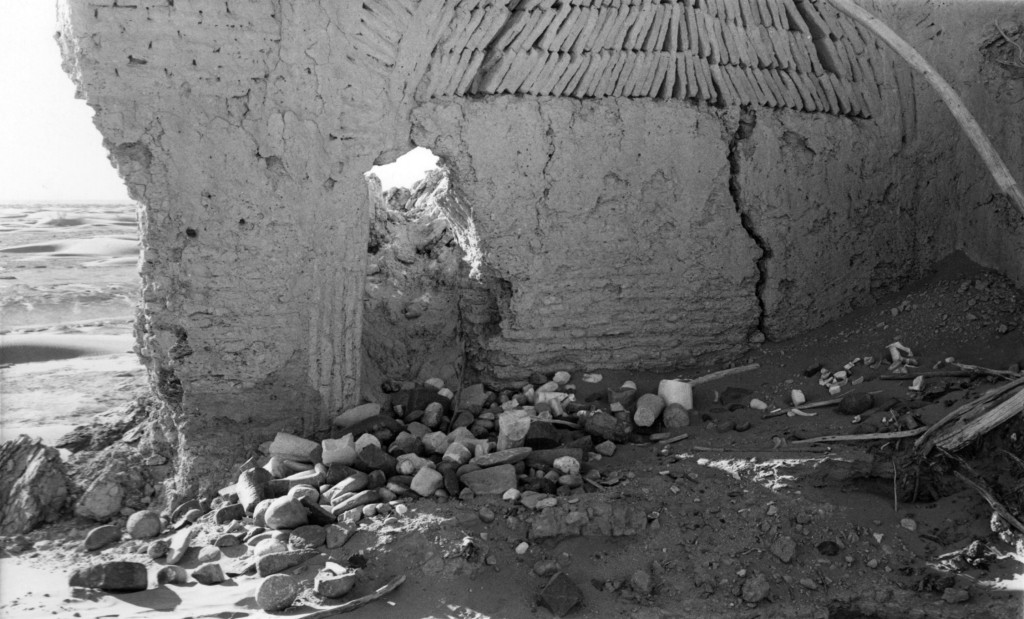Godar-i Shah
Gazetteer ID: 383
Latitude: 29.911843 Longitude: 61.345472
Enlarged satellite view
Atop a conical mound 5 m in height along the Shela Rud are the remains of a mudbrick mausoleum for a recent imam. The site was visited by British explorers in the late 19th century and studied by American archaeologist George Dales several years before our visit. Scattered inside the building are numerous objects from other archaeological sites left in honor of the imam. Many of them—miniature columns, large stone discs, heavy stones with carved handles, travertine cups—are similar to ones known from Turkmenistan and eastern Iran dating to about 1800 BCE and belonging to the Bactria-Margiana Archaeological Complex, the only site in Afghan Sistan that has such an extensive collection. The objects at Godar-i Shah likely come from a still-undiscovered nearby Bronze Age site or cemetery that originally held these objects. Mixed with these objects are modern ceramic bits, rifle shells, and pieces of cloth. We noted other Islamic period buildings in the area, likely a community from the Timurid period, which indicates there was water in this area at that time.



